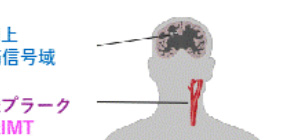
Strength in numbers: Worldwide study finds new genetic risk factors for stroke
Researchers in a large multicenter study develop a comprehensive map of genetic risk factors for stroke and lay the groundwork for more individualized approaches to treatment
Stroke is a serious disease affecting blood flow to and from the brain, and is the second leading cause of death worldwide. Stroke is characterized by a sudden onset of neurological dysfunction, caused by a blood clot or hemorrhage in a cerebral artery. While many genetic variants and lifestyle behaviors have been identified as risk factors for stroke, the genetic basis for the disease is unknown.
Now, in one of the largest multi-institutional studies conducted to date, researchers analyzed the genomes of over half a million individuals across the world to find mutations predicting stroke risk—and to find clues to personalized treatment.
The research team performed a multi-ancestry, genome-wide association study (GWAS) of 67,162 patients who had suffered a stroke, along with 454,450 healthy individuals. The consortium, which consisted of nearly 200 research institutions, leveraged the large sample size to identify genetic differences that would be significantly more difficult to detect in a smaller study.
“The study was essentially a meta-analysis of several earlier studies,” explains Masahiro Kanai, a genetic statistician from Osaka University who contributed to the data analysis. “Our goal was to use the sheer power of numbers to find new genetic variants linked to different forms of stroke.”
The GWAS compared the genomes of the two groups to uncover mutations that might explain the onset of stroke. The study focused on short nucleotide polymorphisms (SNPs), which are single-letter mutations in the genome that are unique to specific populations or ethnic groups. While SNPs are not always linked to disease, they typically serve as red flags that a person may be predisposed to develop an illness. Moreover, SNPs are often located in or close to genes, which can offer hints to the genetic cause of a disease.
The researchers examined approximately eight million SNPs of the 10 million thought to exist in humans. Previous efforts to identify stroke-related factors had collectively associated 10 SNPs with a greater risk of stroke. The current analysis uncovered 22 more SNPs—more than tripling the number of known genetic risk factors for stroke.
“The depth of the data allowed us to explore risk factors with an unprecedented level of detail,” Kanai adds. “We were able to assess how ancestry affects a person’s risk of stroke, for example. We determined how other vascular traits are related to stroke risk, and parsed out which genetic variants are associated with particular kinds of stroke. We even started to probe for some of the more exotic features of a person’s genome, like how proteins decorate the DNA of at-risk patients differently than other individuals.”
The study may have broad implications beyond predicting stroke risk. For one, the findings are likely to advance the theoretical understanding of stroke, as many of the novel risk factors were found to be near genes with no previously known link to stroke. That discovery alone may open new research avenues to unravel the underlying mechanisms of the disease.
Perhaps the most salient finding of the study, however, is that many of the SNPs are linked to genes targeted by therapies that are already used to treat and prevent stroke. The ability of the study to pinpoint known therapeutic targets speaks to its predictive power, and suggests that many of the newly identified genetic variants may become promising new targets for stroke treatment.
“We’re still far from the reality of personalized medicine, but studies such as this one will go a long way toward getting us there,” notes Yukinori Okada, professor of statistical genetics at Osaka University and a contributing analyst to the project. “Imagine a physician being able to pull up a patient’s DNA like a roadmap, and plan out the best treatment route based on their own individual genetic makeup. Our findings are still quite rudimentary in the context of that ideal scenario, but they are an important first step in the process.”

Fig.1. Genetic loci identified by the trans-ethnic genome-wide meta-analysis of stroke.
(credit: Osaka University)

Fig.2. Overlap of the stroke-associated genes among the clinical subtypes of stroke.
(credit: Osaka University)

Fig.3. Connection from the stroke risk SNPs to clinical indication of antithrombotic therapy.
(credit: Osaka University)
To learn more about this research, please view the full research report entitled " Multiancestry genome-wide association study of 520,000 subjects identifies 32 loci associated with stroke and stroke subtypes " at this page of Nature Genetics.
Related links
